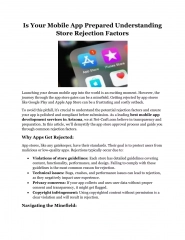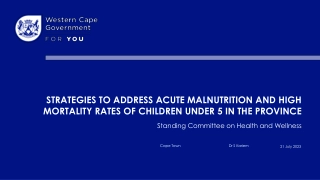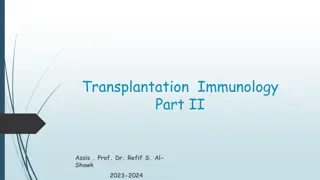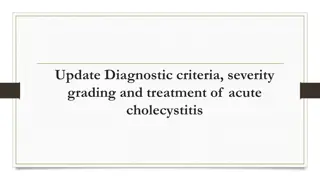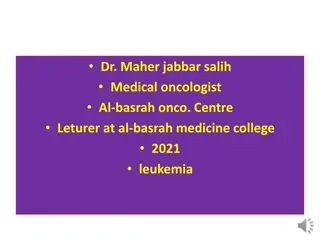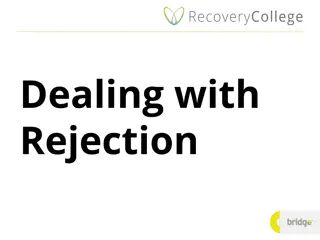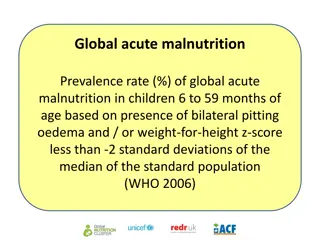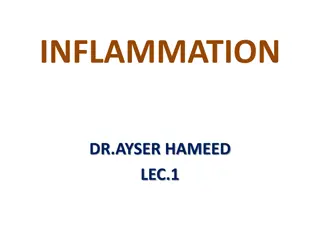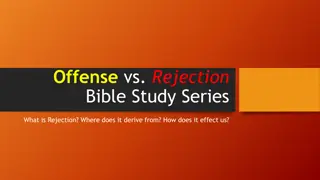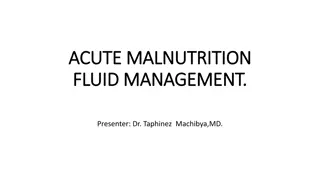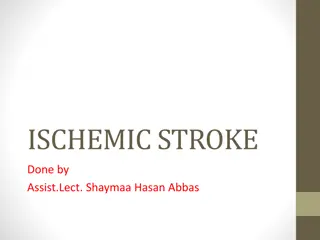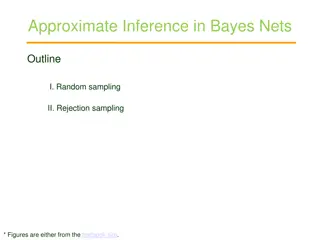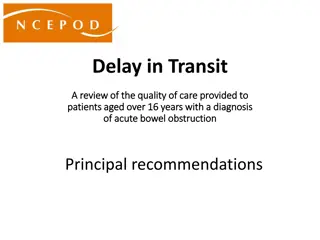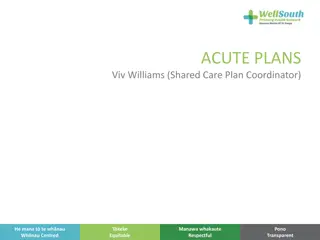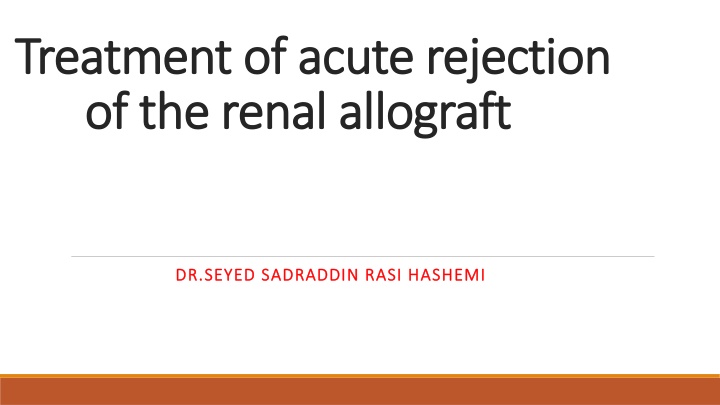
Managing Acute Rejection of Renal Allografts: Insights and Strategies
Learn about the treatment and management of acute rejection episodes in renal allograft recipients, the impact of rejection on long-term graft survival, and the histologic forms of acute rejection. Understand the importance of potent immunosuppressive drugs in reducing rejection incidence and the coexistence of acute T cell-mediated and antibody-mediated rejection.
Download Presentation

Please find below an Image/Link to download the presentation.
The content on the website is provided AS IS for your information and personal use only. It may not be sold, licensed, or shared on other websites without obtaining consent from the author. If you encounter any issues during the download, it is possible that the publisher has removed the file from their server.
You are allowed to download the files provided on this website for personal or commercial use, subject to the condition that they are used lawfully. All files are the property of their respective owners.
The content on the website is provided AS IS for your information and personal use only. It may not be sold, licensed, or shared on other websites without obtaining consent from the author.
E N D
Presentation Transcript
Treatment Treatment of acute rejection of acute rejection of the renal of the renal allograft allograft DR.SEYED DR.SEYED SADRADDIN RASI HASHEMI SADRADDIN RASI HASHEMI
INTRODUCTION INTRODUCTION
Acute renal allograft rejection is a major cause of allograft dysfunction. Some kidneys do not regain function even with maximal antirejection therapy.
Even among patients who recover, acute rejection episodes can have a negative impact on long-term graft survival. Acute rejection is a major predictor of interstitial fibrosis/tubular atrophy (IF/TA), formerly called chronic allograft nephropathy, which is responsible for most deathcensored graft loss after the first year posttransplant.
There has been a dramatic reduction in the incidence of acute rejection due to the introduction of potent immunosuppressive drugs in the past three decades.
Acute renal allograft rejection is defined as an acute deterioration in allograft function associated with specific pathologic changes in the graft. There are two principal histologic forms of acute rejection:
There are two principal histologic forms of acute rejection: Acute T cell-mediated (cellular) rejection (TCMR), which is characterized by lymphocytic infiltration of the tubules, interstitium, and, in some cases, the arterial intima. Active (acute) antibody-mediated rejection (ABMR), the diagnosis of which requires morphologic evidence of acute tissue injury, evidence of circulating donor-specific alloantibodies, and evidence of antibody-endothelial cell interaction (such as C4d deposition in the allograft).
ABMR and acute TCMR may coexist at the same time in the allograft.
Acute T cell- mediated (cellular) rejection (TCMR)
The use of potent immunosuppressive agents as part of induction and maintenance therapy for kidney transplantation has significantly reduced the incidence of acute rejection to approximately 8 percent at most transplant centers
A renal allograft biopsy is required to establish the diagnosis and determine the severity of rejection in order to determine the most appropriate approach to therapy. TCMR and ABMR may also coexist at the same time in the renal allograft (ie, mixed acute rejection). The presence of histologic evidence of acute rejection on biopsy without an elevation in the serum creatinine concentration is known as subclinical rejection.
Acute TCMR occurs most commonly within the first year after transplantation and rarely occurs after five years posttransplan.
The treatment approach in patients with histologic evidence of acute TCMR is guided predominantly by the histopathologic severity of rejection (algorithm 1).
Initial treatment Initial treatment of acute T cell of acute T cell- - mediated mediated rejection of the rejection of the renal renal allograft allograft
In patients with borderline TCMR, there is no consensus regarding optimal management. Some transplant centers do not administer specific treatment for rejection but augment maintenance immunosuppression by targeting higher tacrolimus levels (ie, 5 to 7 ng/mL) in patients whose tacrolimus trough levels are in the lower range (ie, 3 to 5 ng/mL) and/or by optimizing mycophenolate dosing.
In most patients with Banff grade I rejection, we administer pulse high-dose intravenous( IV) glucocorticoids, followed by an oral glucocorticoid taper. In addition, we augment maintenance immunosuppression. In patients with Banff grade IB rejection and few or no chronic histologic lesions who present less than one year posttransplant, we give rabbit antithymocyte globulin (rATG)-Thymoglobulin in addition to pulse glucocorticoids.
Banff grade I rejection In patients with biopsy-proven Banff grade IA or IB TCMR (with no evidence of ABMR), we typically advocate inpatient admission for management. We administer pulse IV methylprednisolone at 3 to 5 mg/kg daily for three to five doses, with a maximum daily dose of 500 mg. After a glucocorticoid pulse, oral glucocorticoids are tapered immediately to the maintenance dose of oral prednisone the patient had been taking prior to the episode.
If there are no concerns for nonadherence, we augment the maintenance prednisone dose. As an example, if the rejection occurred while the patient was taking 5 mg/day, we would increase the maintenance prednisone to 10 mg/day.
In patients with Banff grade IB TCMR and few or no chronic histologic lesions who present less than one year posttransplant, we give rATG-Thymoglobulin in addition to pulse glucocorticoids at 1.5 to 3 mg/kg per dose over one to three days for a total dose of 3 to 6 mg/kg in the first year.
Banff grade II or III rejection In patients with biopsy-proven Banff grade IIA, IIB, or III TCMR, we typically advocate inpatient admission for management. We administer pulse IV methylprednisolone 3 to 5 mg/kg daily for three to five doses (with a maximum daily dose of 500 mg), followed by a short tapered dose of oral prednisone.
A typical glucocorticoid taper would be to start with prednisone 40 mg daily and to reduce the daily dose by 10 mg every five days until a dose of 10 mg daily is reached, after which the daily dose is reduced to 5 mg daily after another five days.
we administer daily rATG-Thymoglobulin at 1.5 to 3 mg/kg per dose for a total dose of 5 to 10 mg/kg. In patients with Banff class IIA TCMR, we would give rATG- Thymoglobulin 2.5 mg/kg daily for two days, and in patients with Banff class III TCMR, we would give 2 mg/kg daily for four to five days depending upon the response in serum creatinine.
In patients who cannot receive rATG-Thymoglobulin, we give alemtuzumab as a single IV dose of 30 mg.
Such patients include those with a known history of allergic reaction to rATG-Thymoglobulin (such as during induction therapy or during previous treatment of rejection) or those with a white blood cell count less than 2000/microL or a platelet coun tless than 75,000/microL.
We also give alemtuzumab, rather than rATG-Thymoglobulin, to patients who have a previous history of significant rabbit exposure (ie, history of having raised or ingested rabbits) and, therefore, may be at risk for developing serum sickness after treatment with rATG- Thymoglobulin.
In all patients who are treated with rATG-Thymoglobulin (or alemtuzumab) and highdose glucocorticoids, we recommence antimicrobial and antiviral prophylaxis for at least three months with a regimen that is identical to that administered in the immediate posttransplant period.
Antimicrobial and Antiviral prophylaxis This includes prophylaxis against Pneumocystis pneumonia (PCP), cytomegalovirus (CMV) infection and disease, and herpes simplex infection (in patients who are at low-CMV risk). In addition, we also administer antifungal prophylaxis.
Active (acute) antibody-mediated rejection (ABMR)
Antibody-mediated rejection (ABMR) is the most common cause of allograft failure after kidney transplantation.
The revised Banff 2017 classification of ABMR defines active (previously called acute) and chronic active ABMR as conditions in which histologic evidence of acute and chronic injury is associated with evidence of current/recent antibody interaction with vascular endothelium and serologic evidence of donor-specific antibodies (DSA) to human leukocyte antigen (HLA) or non-HLA antigens.
The primary goal of treating ABMR is to remove existing donor- specific antibodies (DSAs) and to eradicate the clonal population of B cells or plasma cells that is responsible for their production. In general, we treat all patients who have evidence of active ABMR on biopsy.
we would treat patients who are discovered to have subclinical ABMR by surveillance biopsy. In addition, we treat patients with C4d-negative ABMR with the same approach that we use in patients with C4d-positive ABMR.
Approach to initial therapy Our recommendations for the treatment of ABMR are primarily based upon Kidney Disease: Improving Global Outcomes (KDIGO) clinical practice guidelines and the 2019 Transplantation Society Working Group Expert Consensus.
We typically advocate inpatient admission for patients because of the complexity of the treatment regimen. Our approach to the initial treatment of active ABMR depends upon the timing of the diagnosis of ABMR (algorithm 1)
Initial treatment of active antibody- mediated rejection of the renal allograft
Within the first year posttransplant In patients who are diagnosed with active ABMR within the first year posttransplant, we treat with a combination of glucocorticoids, plasmapheresis and intravenous (IV) immune globulin (IVIG), and, in some patients, rituximab as follows:
We give IV methylprednisolone at a dose of 300 to 500 mg daily for three to five days, followed by a rapid oral prednisone taper to the patient's previous maintenance dose of prednisone.
Plasmapheresis is performed daily or every other day for a maximum of six sessions or until the serum creatinine is within 20 to 30 percent of the baseline. The initial treatment is typically a one-and-one-half-volume exchange with albumin, and subsequent treatments are a one- volume exchange with albumin.
We prefer an every-other-day plasmapheresis schedule as albumin alone can often be administered for replacement with interval recovery of the prothrombin time (PT), partial thromboplastin time (PTT), and fibrinogen to acceptable levels without the need to administer fresh frozen plasma. This avoids the risk of antigen sensitization; however, one to two units of fresh frozen plasma may be used for replacement at the end of a plasmapheresis treatment if indicated
We administer IVIG at a dose of 100 mg/kg after each session of plasmapheresis. We typically give 500 mg/kg per day for one to two days after the final session of plasmapheresis, with a total cumulative target dose of at least 1000 mg/kg of IVIG.
In patients with evidence of microvascular inflammation on biopsy (ie, Banff glomerulitis score [g] + peritubular capillary score [ptc] >0), we administer rituximab as a single dose of 200 to 375 mg/m2 after completion of plasmapheresis and IVIG.
Active ABMR posttransplant posttransplant ABMR after the first year after the first year We treat with glucocorticoids using the same approach as described above in patients diagnosed with ABMR within the first year posttransplant.
we do not perform plasmapheresis in such patients because of the lack of evidence supporting the safety and efficacy of plasmapheresis in late-onset ABMR.
We administer IVIG at a dose of 200 mg/kg every two weeks for three doses.
In patients with evidence of microvascular inflammation on biopsy, we administer rituximab as a single dose of 375 mg/m2after completion of IVIG. We also augment maintenance immunosuppression.

